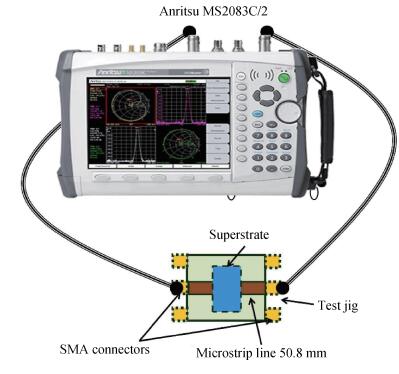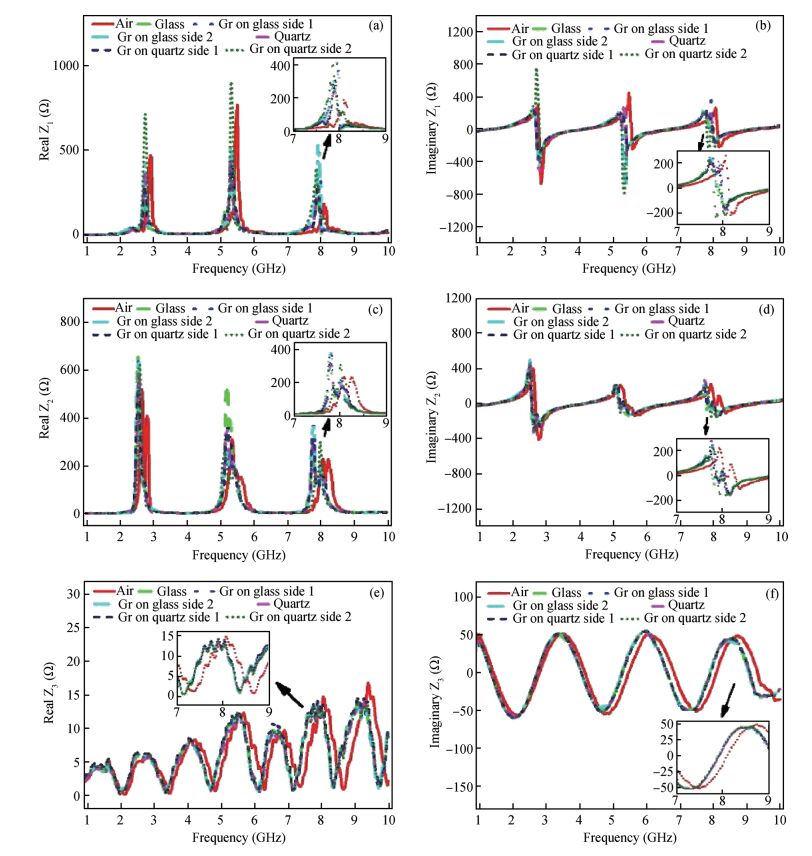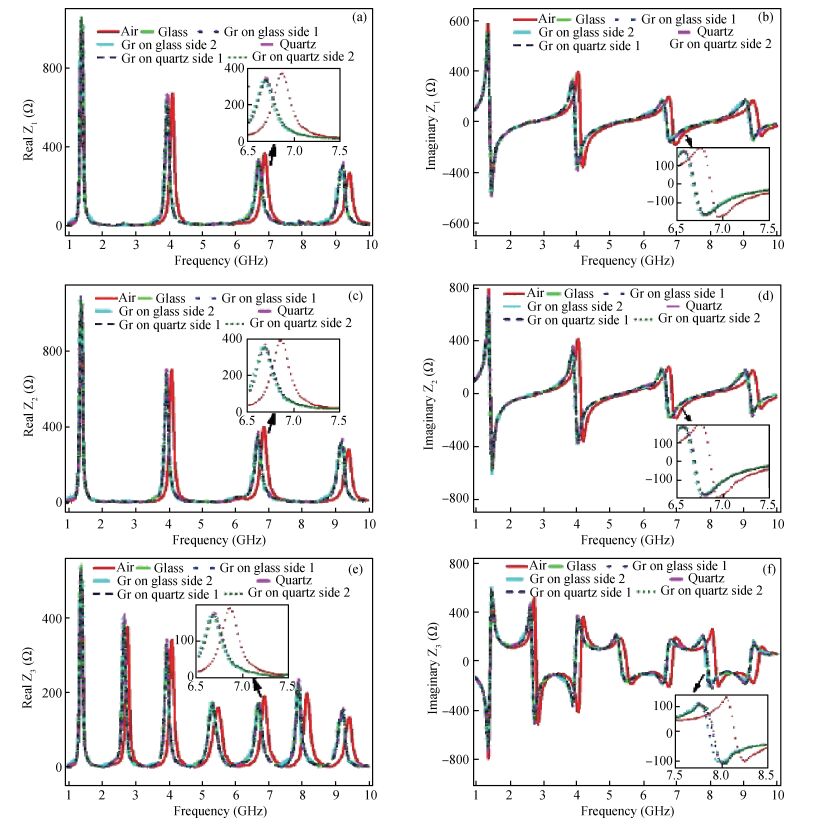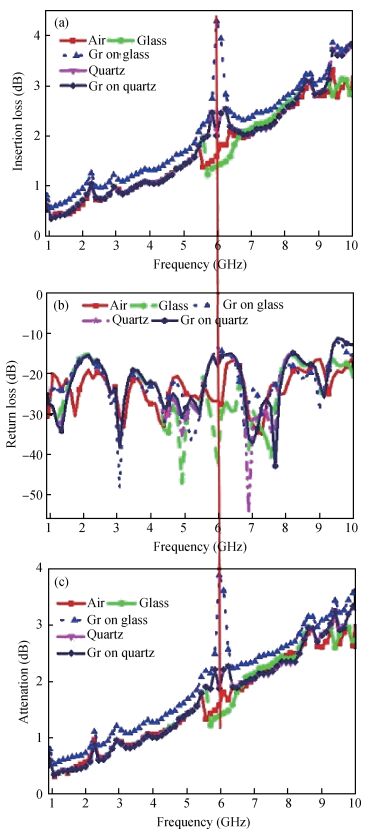| Citation: |
Pulkit Sharma, Pratap Singh, Kamlesh Patel. Attenuation characteristics of monolayer graphene by Pi-and T-networks modeling of multilayer microstrip line[J]. Journal of Semiconductors, 2017, 38(9): 093003. doi: 10.1088/1674-4926/38/9/093003
****
P Sharma, P Singh, K Patel. Attenuation characteristics of monolayer graphene by Pi-and T-networks modeling of multilayer microstrip line[J]. J. Semicond., 2017, 38(9): 093003. doi: 10.1088/1674-4926/38/9/093003.
|
Attenuation characteristics of monolayer graphene by Pi-and T-networks modeling of multilayer microstrip line
DOI: 10.1088/1674-4926/38/9/093003
More Information
-
Abstract
The impedances of Pi-and T-networks are obtained from the measured S-parameters of the multilayer microstrip line by modeling as an attenuator. The changes in impedances have been analyzed for the properties of various superstrates at the microwave ranges. With graphene on glass and graphene on quartz loadings, the impedances have increased and shifted towards lower frequency more in Pi-network than T-network modeling. This shift has become more prominent at higher frequency for the graphene on glass than graphene on quartz. A little increase in attenuation is found for graphene on glass or quartz than bare glass and quartz. The present study can be extended to obtain attenuation characteristic of any thin film by simple experimental method in the microwave frequencies.-
Keywords:
- microstrip line,
- attenuator,
- graphene,
- S-parameters,
- impedance
-
References
[1] Rizzi P A. Microwave engineering passive circuits. Noida:PHI Learning Private Limited, 2013[2] Lance A L. Introduction to microwave theory and measurements. New York:McGraw Hill Book Company, 1964[3] Pierantoni L. RF nanotechnology——concept, birth, mission, and perspectives. IEEE Microw Mag, 2010, 11:130[4] Dragoman M, Neculoiu D, Dragoman D, et al. Graphene for microwaves. IEEE Microw Mag, 2010, 11:81 doi: 10.1109/MMM.2010.938568[5] Dragoman M, Cismaru A, Stefanescu A, et al. The electromagnetic properties of graphene in the microwave and millimeter wave spectrum. 43rd European Microwave Conference, Nuremberg, 2013:530[6] Perruisseau-Carrier J. Graphene for antenna applications, opportunities and challenges from microwaves to THz. Loughborough Antennas & Propagation Conference (LAPC2012), 2012:1[7] Bozzi M, Pierantoni L, Bellucci S. Applications of graphene at microwave frequencies. Radio Eng, 2012, 24:661[8] Wu Y, Xu Y, Wang Z, et al. Microwave transmission properties of chemical vapor deposition graphene. Appl Phys Lett, 2012, 101:053110 doi: 10.1063/1.4737424[9] Pozar D M. Microwave engineering. 4th ed. New York:John Wiley & Sons, 2012[10] Ghosh S. Network theory:analysis and synthesis. Noida:PHI Learning Private Limited, 2013[11] Agilent de-embedding and embedding. S-parameter networks using a vector network analyzer, application note 1364-1. Agilent Technologies, Inc. , USA, 2004, 5980-2784EN[12] Wu B, Tuncer H M, Katsounaros A, et al. Microwave absorption and radiation from large-area multilayer CVD graphene. Carbon, 2014, 77:814 doi: 10.1016/j.carbon.2014.05.086[13] [14] [15] Collier R J, Skinner D. Microwave measurements. 3rd ed. London:IET, 2007[16] Wang Y Y, Ni Z, Yu T, et al. Raman studies of monolayer graphene:the substrate effect. J Phys Chem C, 2008, 112:10637 doi: 10.1021/jp8008404 -
Proportional views





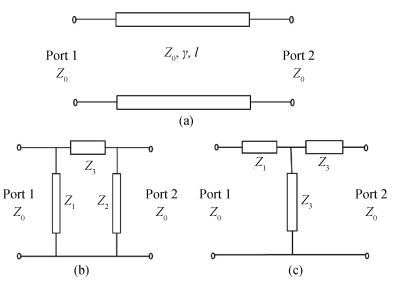
 DownLoad:
DownLoad:
